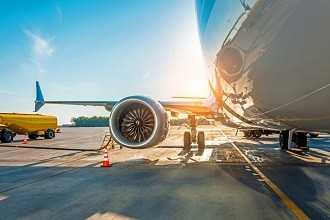
While many workforce experts expect much of the workforce to return to the office—eventually—they also believe that the one-size-fits-all, 9-5 office routine is gone forever. The covid pandemic disrupted workplaces dramatically, speeding up the remote work trend, demonstrating that work from anywhere can work and showing how effectively videoconferencing and other technology can facilitate collaboration.
It’s fair to wonder if the pandemic will have similar lasting effects on employee business travel. Business trips were an early casualty of the pandemic. When companies abruptly moved to remote work in spring 2020, most also imposed travel bans. There were no offices to visit, conferences were canceled or made virtual and routine meetings and training were conducted virtually. International travel, of course, became almost impossible. Even in situations where an in-person meeting was long considered essential, such as best and final presentations and high-stakes negotiations, virtual meetings became de rigueur.
Is Employee Business Travel Necessary?
IdeaWorks, an airline consulting firm, estimates that only 25 percent of business travel is related to business development—the purpose companies often deem most important. Forty percent of business travel is to conferences or intra-company meetings. The rest includes client visits and technical support. As a result, IdeaWorks expects that 19-36 percent of business travel will not return. Likewise, McKinsey says that 20 percent of business travel is unlikely to return, and another 60 percent is potentially expendable.
Business travel had also evolved into a talent mobility tool, occasionally standing in for permanent relocation. For limited-duration projects, both within the U.S. and globally, business travel could sometimes allow a company to share knowledge and meet a business need without the cost and disruption of permanent employee relocation.
IdeaWorks estimates that five percent of business travelers are employees commuting in place of a domestic relocation. Business travel might continue to be an attractive alternative to relocation in some situations, particularly with an even more dispersed workforce.
Most Businesses Plan to Spend Less on Business Travel Post-Pandemic
According to the travel booking site Kayak, flight searches for top business travel destinations have fallen precipitously since 2019. For example, searches for Hong Kong flights are down 88 percent, Tokyo 73 percent, London 52 percent and New York 29 percent.
A recent Bloomberg survey of 45 large businesses in the U.S., Europe and Asia indicated that 84 percent plan to spend less on travel post-pandemic. Most respondents expect to reduce travel budgets by 20-40 percent, with two-thirds cutting internal and external meetings.
According to the Global Business Travel Association, spending on corporate trips could slide to as low as $1.24 trillion by 2024 from a pre-pandemic peak in 2019 of $1.43 trillion.
Reduced Business Travel Can Support Company ESG Goals and Employee Well-Being
For most companies, cost savings will be the primary driver in reducing business travel. But cutting back can also support the company’s Environmental, Social, and Corporate Governance (ESG) goals. “Companies have acknowledged that reducing the level of flights is one way of reducing climate change,” said Andrew Murphy, aviation director at advocacy group Transport & Environment. “For the next ten years, the best way to reduce emissions from aviation is to fly less.”
Further, “A nice side effect of fewer long-haul business trips is less stress for the people who fly,” Hans-Ingo Biehl, the head of VDR, the German Business Travel Association, said in an interview. Frequent flyers can suffer from a variety of disorders, ranging from dehydration to increased cancer risk.
Reduced Employee Business Travel Will Make Flying More Expensive for All Travelers
Paradoxically, as companies look to control costs by reducing business travel, the resulting lower volume will cause airfares to rise. Why? Business travelers make up only 25 percent of airline customers, but they account for 75 percent of airline companies’ profits. Business-class seats cost three to five times more than economy seats, with only a marginally higher service cost. As a result, one business traveler can produce as much revenue as five or six leisure travelers.
Even when they’re not flying business class, business travelers still tend to pay more for tickets by booking at the last minute to meet business needs or choosing more expensive, refundable fares. If business travelers don’t return and generate this revenue, airlines will cut flights and likely raise fares across the board.
Like office routines and talent mobility, it appears that employee business travel will be in flux for some time to come as we reconsider how and where we work. Reassessing previous assumptions could ultimately result in greater flexibility and lower costs for companies and possibly even benefit employees and the environment.




